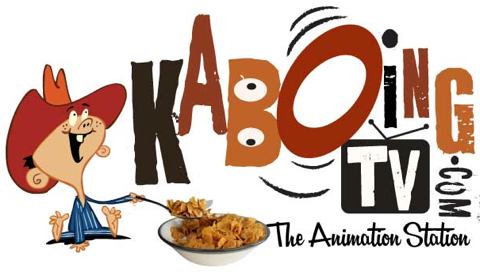
Word come through from Cartoon Brew about a feature in the New York Times about the new, upcoming Looney Tunes TV to be broadcast on Cartoon Network leter this year. There was plenty of consternation a while back after the upfront where the show was unveiled. The comments on the Brew then as well as now were pretty much about as big a backlash as you could expect from the animation community regarding classic characters such as Bugs and Daffy. (By the way, I know I’ve touched on this topic before, but this is more of a commentary/opinion post and not nearly as sarcastic as the last one).
The NYT piece made light of the fact that kids these days don’t seem to know much if anything about the Looney Tunes. Quote from the article:
Ask a first grader to identify Bugs Bunny and the response more likely than not will be a blank stare. Dora, sure. Mickey, alive and kicking. But Porky who?
Anyone over the age of 15 will give you a wry smile as all the memories come flooding back. the same can’t be said for youger folks, they may even look at you as if you had two head, or began speaking Japanese!
The distinction was made between the Looney Tunes and Winnie the Pooh in that the latter still pulls in close to $5 billion in contrast to the $1 billion for Bugs & Co. Such a comparison isn’t really fair though. Winnie the Pooh isn’t exactly aimed at the same market, skewing much younger. Additionally, Winnie the Pooh has been longer established and has a seperate set of books to his name, all of which continue to bring in merchandise dollars.
Another aspect that is important to mention, Disney continually markets Winnie the Pooh. In contrast, Warner Bros. (or Time-Warner for that matter) has done little over the last 10 years. Let’s examine it together. Long ago, the Looney Tunes/Merrie Medodie shorts reigned supreme. Not only were the extremely popular, they were broadcast almost continuously, either as shorts themselves or as part of a TV show, e.g. The Bugs Bunny Show.
That time seems like the land of milk and honey compared to now. Would you be able to tell me where I could see a Looney Tunes short on TV today, or even this month? There’s no very many places is there? Sure we’ve had the odd marathon on Cartoon Network, usually on holidays when most people are distracted by turkey or what Santa Claus brought them.
Which brings us back to the age-old problem of “if it’s not readily available, no-one’s going to watch”. A fate which has befallen many fine cartoons and TV shows. Only a fool would try to convince you that an entertainment product can maintain its popoularity without advertising. Now when I say advertising, I don’t mean actual commercials, I mean the shows themselves! If a Looney Tunes short is on TV, that acts like a seven minute commercial that can entice people to watch another short.
The usual plan is to create a “new” TV show, or “update” the characters to the contemporary era, which in itself is a waste of time because within 5 years, the show is outdated. Remeber Lunatics Unleashed? Yeah, yeah I know, it still sucked when it was dubbed into Irish. Well, do you see any shows out there being “anime-fied”, doesn’t that seem so early-2000s? Well that’s basically what happens when you “update” classic cartoon characters, they go stale and end up getting locked in the Warner Vault.
So hear me out. Why not broadcast some of the classic shorts? Instead of, say, starting a TV show on the hour, why not show a short first? Your audience is already there, why not give them something new, or rather not really seen before? They’re still going to stick around for the show they got comfy for, right? The proof is in the pudding, Looney Tunes receipts are higher abroad then in the US. I know myself that RTÉ 2 in Ireland still broadcasts shorts during prime-time children’s programming. Guess how many Irish kids a re growing up with Bugs Bunny in their lives?
In addition, according to the NYT piece, there may be some new theatrical shorts on the way, not unlike “How to Hook Up Your Home Theater”, released in 2007. Well, that’s one thing, but why not plant the seed with some old favourites? Once you’ve guilt up a wee bit of an audience, you can then start throwing on some fertilizer in the form of new stuff. People are likely to be much more receptive to something fresh if they are more familiar with the old classics. Look at Tiny Toons, there was a TV show that gained a following all of it’s own. The classic crowd were mixed with newcomers, who eventually became popular in their own right, giving you a whole new property to exploit.
Personally, I think shorts should be filmed before every major feature film, not only does it increase my theatrical experience, I feel like I’m getting better value for money. That’s never a bad thing, eh?
While a new show is undoubtedly necessary to bring Bugs and Daffy in from the cold, a more comprehensive strategy is needed. Disney is the gold standard in this regard, Mickey Mouse is still as popular and well known as he has ever been, having said that, he as never exactly been out of the public’s attention either. Warner Bros. needs to do the same, starting with creeping the gang back onto screens slowly building their way up to the big stuff, i.e. films.
C’mon guys, Warner Brothers Animation is so much more than Detective Comics direct to DVD movies you still have plenty of fans out here.







